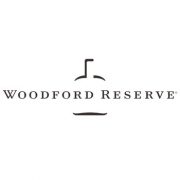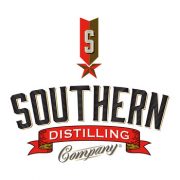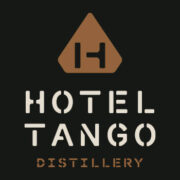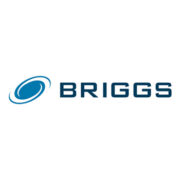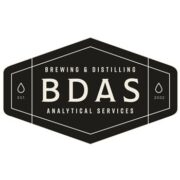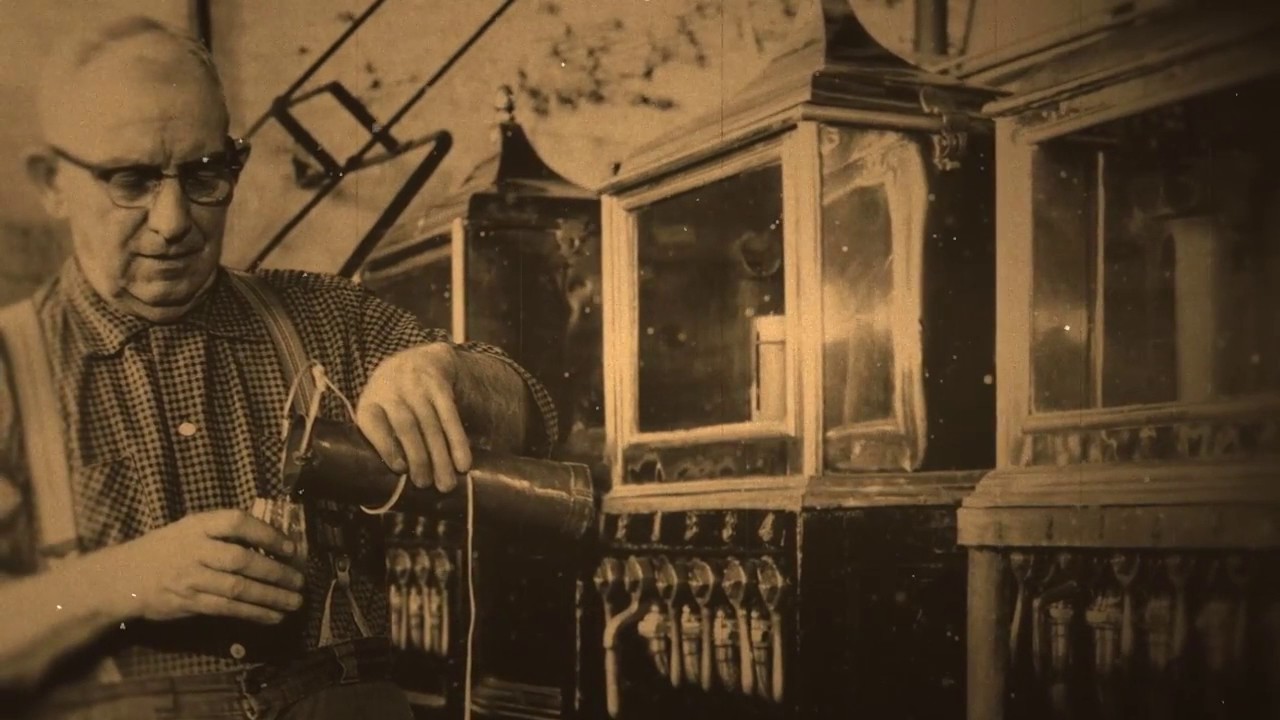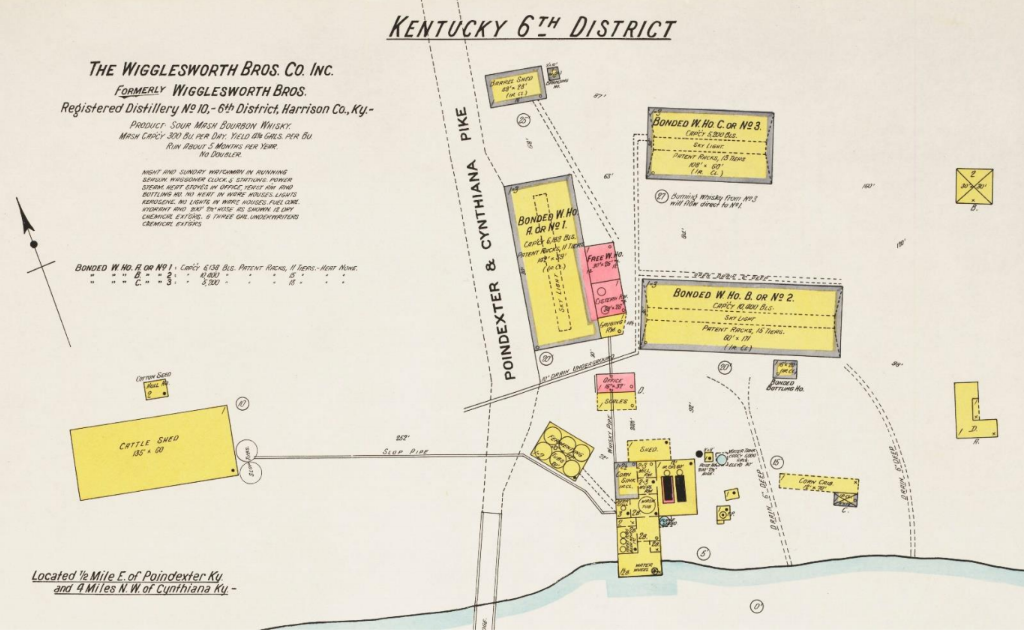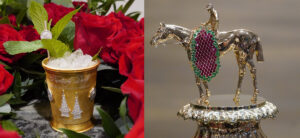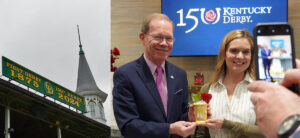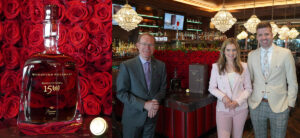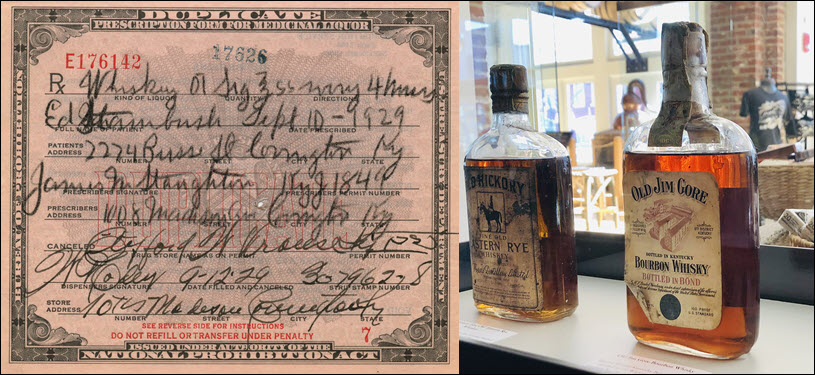
The Frazier History Museum on Whiskey Row in Louisville, Kentucky is like the Leatherman you keep in that leather sheath that’s strapped to your belt. Yes, the Frazier History Museum is a museum but it offers so much once you open it up and get to know it. As of August 2018, the museum became the home to the official starting point of the Kentucky Bourbon Trail and The Spirit of Kentucky exhibition. Now when someone asks, “Where does the Kentucky Bourbon Trail start?” there’s a definitive answer. It was around that same time that the museum received its license to sell bottles of Kentucky’s finest bourbon and rye spirits in its gift shop and serve alcohol in its Speakeasy and Order of the Writ bar.
Sales of Vintage Spirits Now Legal in Kentucky
Thanks to their license to sell alcohol and a change in Kentucky law the museum can also sell vintage spirits. A vintage distilled spirit, sometimes known as a dusty bottle, is a distilled spirit that remains in its original manufacturer’s unopened container(s), that is not owned by a distillery, and that is not otherwise available for purchase from a licensed wholesaler within the Commonwealth of Kentucky.
In 2017 the Kentucky legislature took a major step toward modernizing the alcohol beverage industry. HB 100, sponsored by Rep. Chad McCoy of Bardstown, allows the private purchase and sale of vintage and rare spirits back on the marketplace. If an individual discovers a rare or well-aged bottle of bourbon from a long-defunct distiller, possibly left over from a prior generation, that bottle — if unopened and still sealed — can now be brought to the retail market.
The market for vintage spirits has boomed in the past decade, with collectors, aficionados, and bar owners clamoring for more rare and unusual products. A prospective buyer can use clues to determine whether or not a product is really vintage. Here are a few things to look for when trying to identify vintage spirits.
- If the label says “IRS” instead of “ATF,” then it predates 1979
- If there is a tax stamp on the bottle or a tax seal over its closure it suggests that it predates the Tax Reform Act of 1984, which ended the tax strip
If the bottle’s top is still sealed but the liquid level has dropped a few fingers, that’s to be expected: corks and screw caps are imperfect barriers against evaporation. However, once a whiskey is bottled, it doesn’t age — nor degrade, generally — so its quality should remain unaffected.
Stay Informed: Sign up here for the Distillery Trail free email newsletter and be the first to get all the latest news, trends, job listings and events in your inbox.
Frazier History Museum Offers Three Vintage Prohibition Era Spirits
The Frazier Museum is now offering a limited selection of rare, vintage whiskeys in its museum store. Spanning three different brands — with more brands to follow — the first products in stock were all bottled during Prohibition and authorized for medicinal purposes only.
Old Hickory Fine Old Eastern Rye Whiskey
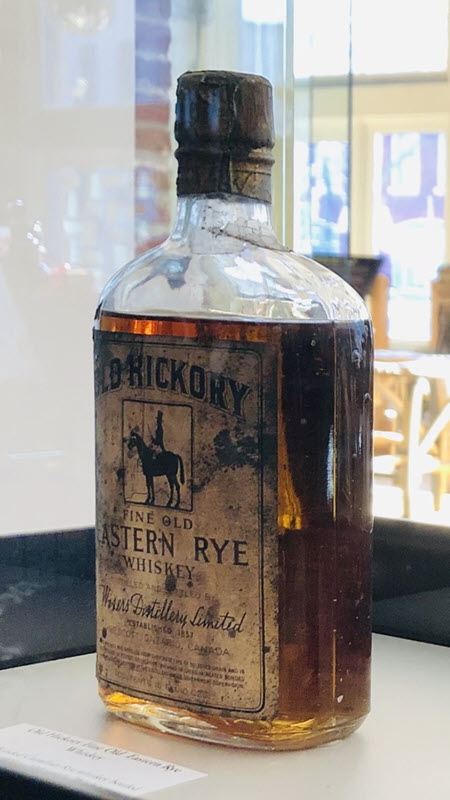
- 1 pint of rye whiskey, bottled in bond, 100 proof (50% ABV)
- Distilled by Wiser’s Distillery Limited
- Bottled in 1925 by Wiser’s Distiller Limited
- Wiser’s Distillery Limited (1857 – 1924); Canadian Industrial Alcohol Co. (c. 1924). Prescott, Ontario, Canada
- Retail Price: $1,500
The product of perfect distillation, this whiskey was distilled from the finest type of selected grain, matured in casks in heated bonded warehouses, and bottled at the distillery under government supervision. The bottle’s markings indicate that it was wax-dipped in Montreal and sealed in Ottawa.
Established in 1857 in Prescott, Ontario, JP Wiser’s Distillery Limited was acquired by the Canadian Industrial Alcohol Company in 1924. This parent organization moved the distillery’s operations to Corbyville, Ontario.
Old Jim Gore Bourbon Whisky – 1912
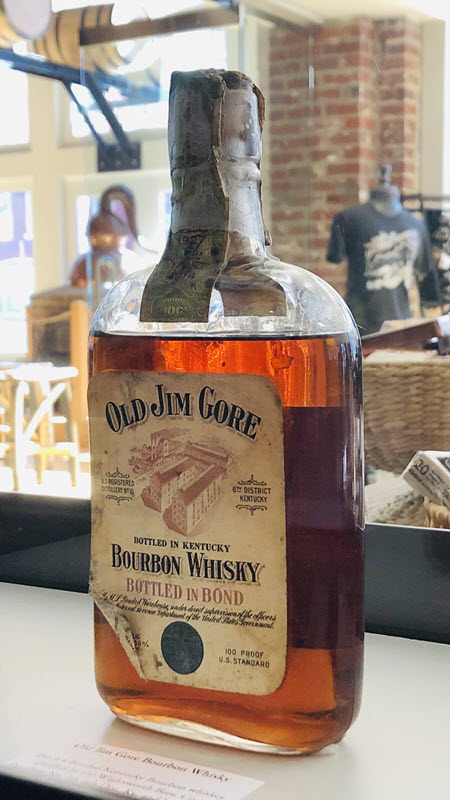
- 1 pint of Kentucky bourbon whiskey, Bottled in Bond, 100 proof (50% ABV), aged 13 years
- Distilled in Spring 19121 by Wiglesworth Bros.
- Bottled in Fall 19251 by James E. Pepper & Co.
- Retail Price: $2,000
Named after one of its Chicago-based proprietors [Chapin & Gore] and advertised as the “Best in the World,” this old-fashioned sour mash bourbon has a rare mellow flavor.
John Poindexter Old Bourbon – 1916
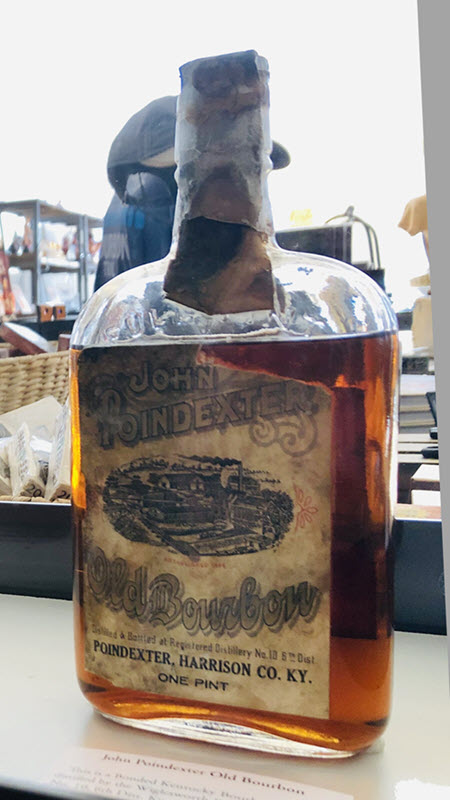
- 1 pint of Kentucky bourbon (100 proof), aged 12 years, bottled in bond
- Distilled in Spring 19162 by Wiglesworth Bros.
- Bottled in Spring 19282 by Joseph Wolf
- 6th Dist., RD #10, Wiglesworth Bros. Co. (1869 – 1919). Harrison County, Kentucky
- Retail Price: $2,000
Introduced by John Poindexter in the 1850s and later acquired by the Wiglesworth Bros. Co., this brand of sour mash bourbon remained in production until Prohibition. Located on the South Fork of the Licking River four miles northwest of Cynthiana, this distillery was built in 1856 by John Poindexter. In 1869 the Wiglesworth family acquired it, tore it down and rebuilt it. By 1910 the mashing capacity had been increased to 300 bushels per day, and there were three bonded warehouses with a storage capacity for 20,000 barrels. In the late 1910s the officers were J. M. Wiglesworth, president and W. T. Wiglesworth, secretary-treasurer. Products included Old G. W. Taylor, Poindexter Bourbon, and Wiglesworth Bros. Sweet Mash. The distillery closed at Prohibition.
In 1924 all the whiskey in storage was transferred to the concentration warehouses of James E. Pepper & Co., a facility in Lexington that had been leased in 1907 for 20 years by Joseph Wolf of Chicago, where it was bottled for medicinal spirits.
View all Kentucky Distilleries.
Endnotes
- Dates vary for one of the Old Jim Gore bottles: it was distilled spring 1914 and bottled spring 1927.
- Dates vary for one of the John Poindexter bottles: it was distilled spring 1914 and bottled spring 1926.
Sources
- Advertisement for Old Jim Gore. LIFE, 25 Oct. 1954, p. 43.
- Advertisement for Old Jim Gore. LIFE, 13 Dec. 1954, p. 85.
- Sanborn Map Co. Sanborn’s Surveys of the Distilleries and Warehouses of Kentucky and Tennessee, Sheet 57. New York, 1910.
- Wallace, W. Stewart. The Encyclopedia of Canada, Vol. II, pp. 214–216. Toronto. University Associates of Canada, 1948.
- Zoeller, Chester. Bourbon in Kentucky: a History of Distilleries in Kentucky, pp. 180–181; 203–204. Butler Books, 2015.
- Source: Sanborn Map – 1910
Please help to support Distillery Trail. Sign up for our Newsletter, like us on Facebook and follow us on Twitter.


